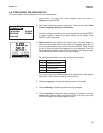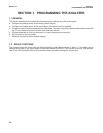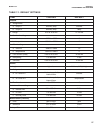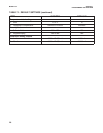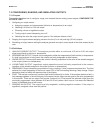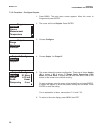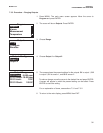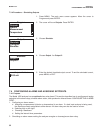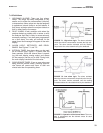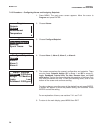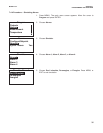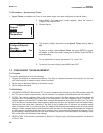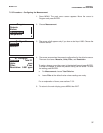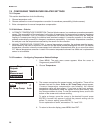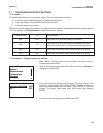
33
MODEL TCL SECTION 7
PROGRAMMING THE ANALYZER
7.4.2 Definitions
1. ASSIGNING ALARMS. There are four alarms
relays. The relays are freely assignable to any
sensor and to either the measurement (chlorine)
or temperature. Alarm relays can also be assigned
to operate as interval timers or as fault alarms. A
fault alarm activates when the analyzer detects a
fault in either itself or the sensor.
2. FAULT ALARM. A fault condition exits when the
analyzer detects a problem with a sensor or with
the analyzer itself that is likely to cause seriously
erroneous readings. If an alarm was programmed
as a fault alarm, the relay will activate. At the
same time a fault message will appear in the main
display.
3. ALARM LOGIC, SETPOINTS, AND DEAD-
BANDS. See Figures 7-1 and 7-2.
4. INTERVAL TIMER. Any alarm relay can be used
as an interval timer. Figure 7-3 shows how the
timer operates. While the interval timer is operat-
ing, the main display, analog output, and alarms
for the sensor(s) can be put on hold. During hold,
the main display remains at the last value.
5. SYNCHRONIZE TIMER. If two or more relays are
being used as interval timers, choosing synchro-
nize timers will cause each timer to start one
minute later than the preceding timer.
FIGURE 7-1. High alarm logic. The alarm activates
when the chlorine concentration exceeds the high set-
point. The alarm remains activated until the reading
drops below the value determined by the deadband.
FIGURE 7-2. Low alarm logic. The alarm activates
when the chlorine concentration drops below the low set-
point. The alarm remains activated until the reading
increases above the value determined by the deadband.
FIGURE 7-3. Operation of the interval timer. The num-
bers in parentheses are the allowed values for each
timer parameter.



